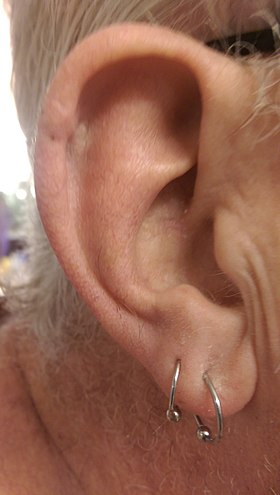
Mohs surgery

Mohs surgery, developed in 1938 by a general surgeon, Frederic E. Mohs, is microscopically controlled surgery used to treat common types of skin cancer. During the surgery, after each removal of tissue and while the patient waits, the tissue is examined for cancer cells. That examination informs the decision for additional tissue removal. Mohs surgery is the gold standard method for obtaining complete margin control during removal of a skin cancer (CCPDMA – complete circumferential peripheral and deep margin assessment) using frozen section histology. CCPDMA or Mohs surgery allows for the removal of a skin cancer with very narrow surgical margin and a high cure rate.1991 Mohs surgery, developed in 1938 by a general surgeon, Frederic E. Mohs, is microscopically controlled surgery used to treat common types of skin cancer. During the surgery, after each removal of tissue and while the patient waits, the tissue is examined for cancer cells. That examination informs the decision for additional tissue removal. Mohs surgery is the gold standard method for obtaining complete margin control during removal of a skin cancer (CCPDMA – complete circumferential peripheral and deep margin assessment) using frozen section histology. CCPDMA or Mohs surgery allows for the removal of a skin cancer with very narrow surgical margin and a high cure rate. The cure rate with Mohs surgery cited by most studies is between 97% and 99.8% for primary basal-cell carcinoma, the most common type of skin cancer.:13 Mohs procedure is also used for squamous cell carcinoma, but with a lower cure rate. Recurrent basal-cell cancer has a lower cure rate with Mohs surgery, more in the range of 94%.:7 It has been used in the removal of melanoma-in-situ (cure rate 77% to 98% depending on surgeon), and certain types of melanoma (cure rate 52%).:4:211-20 Other indications for Mohs surgery include dermatofibrosarcoma protuberans, keratoacanthoma, spindle cell tumors, sebaceous carcinomas, microcystic adnexal carcinoma, merkel cell carcinoma, Paget's disease of the breast, atypical fibroxanthoma, and leiomyosarcoma.:193-203 Because the Mohs procedure is micrographically controlled, it provides precise removal of the cancerous tissue, while healthy tissue is spared. Mohs surgery can also be more cost effective than other surgical methods, when considering the cost of surgical removal and separate histopathological analysis. However, Mohs surgery should be reserved for the treatment of skin cancers in anatomic areas where tissue preservation is of utmost importance (face, neck, hands, lower legs, feet, genitals). Mohs surgery should not be used on the trunk or extremities for uncomplicated, non-melanoma skin cancer of less than one centimeter in size. On these parts of the body, the risks exceed the benefits of the procedure. Due to high risk of recurrence among other reasons, Mohs surgery could be considered for skin cancers on hands, feet, ankles, shins, nipples, or genitals. In 2012, the American Academy of Dermatology published appropriate use criteria (AUC) on Mohs micrographic surgery in collaboration with the following organizations: American College of Mohs Surgery; American Society for Mohs Surgery; and the American Society for Dermatologic Surgery Association. More than 75 physicians contributed to the development of the Mohs surgery AUC, which were published in the Journal of the American Academy of Dermatology and Dermatologic Surgery.
